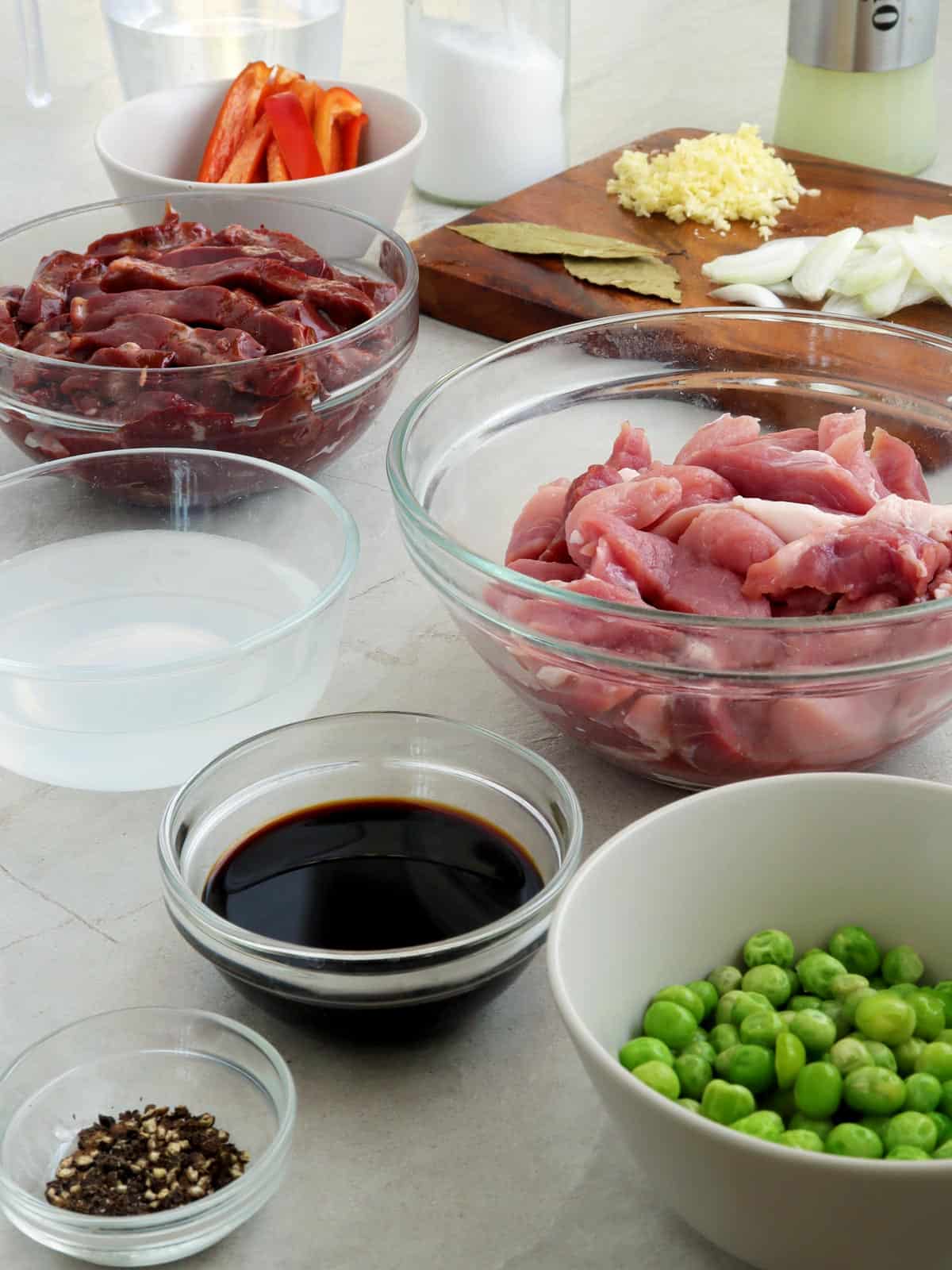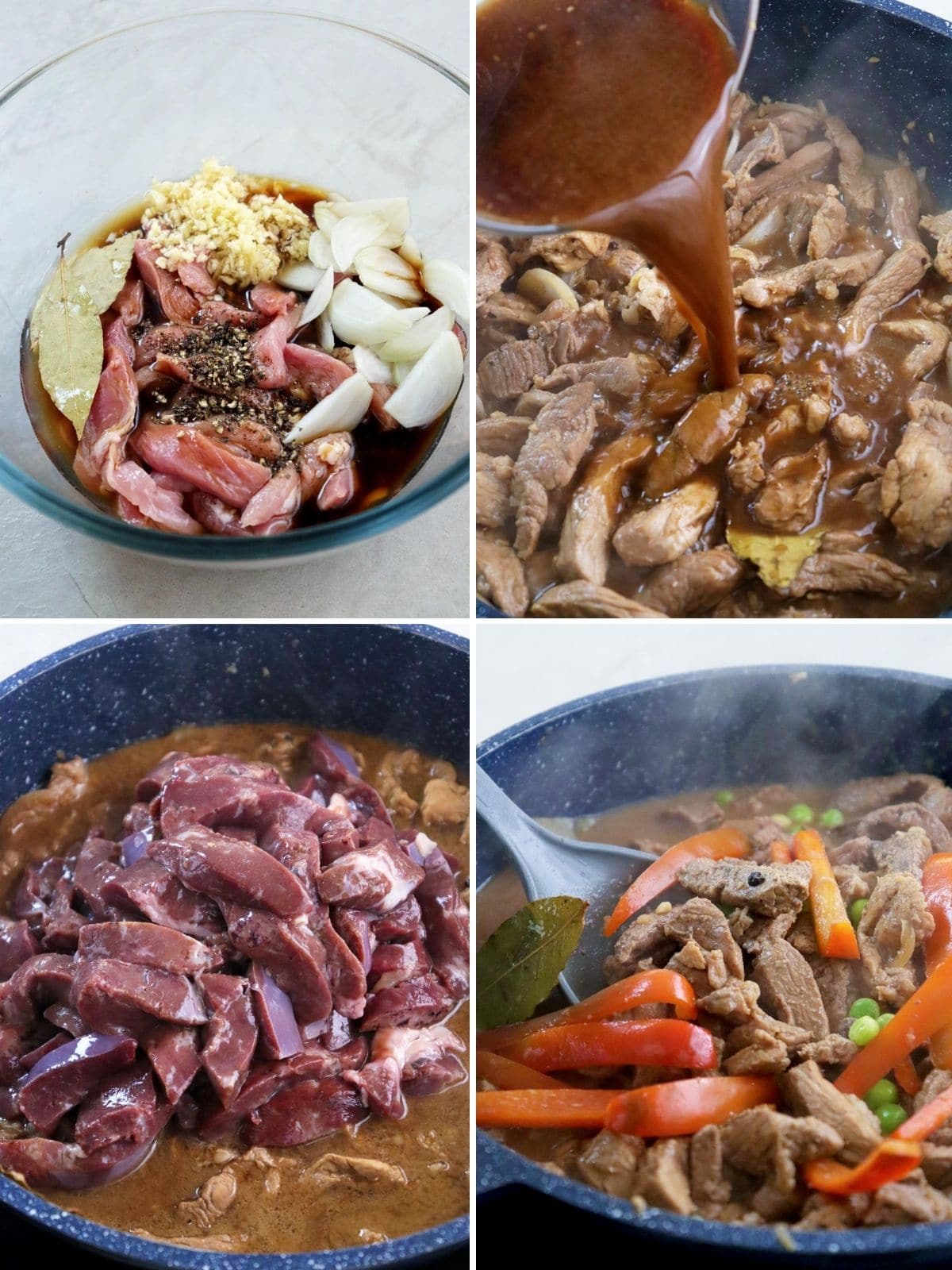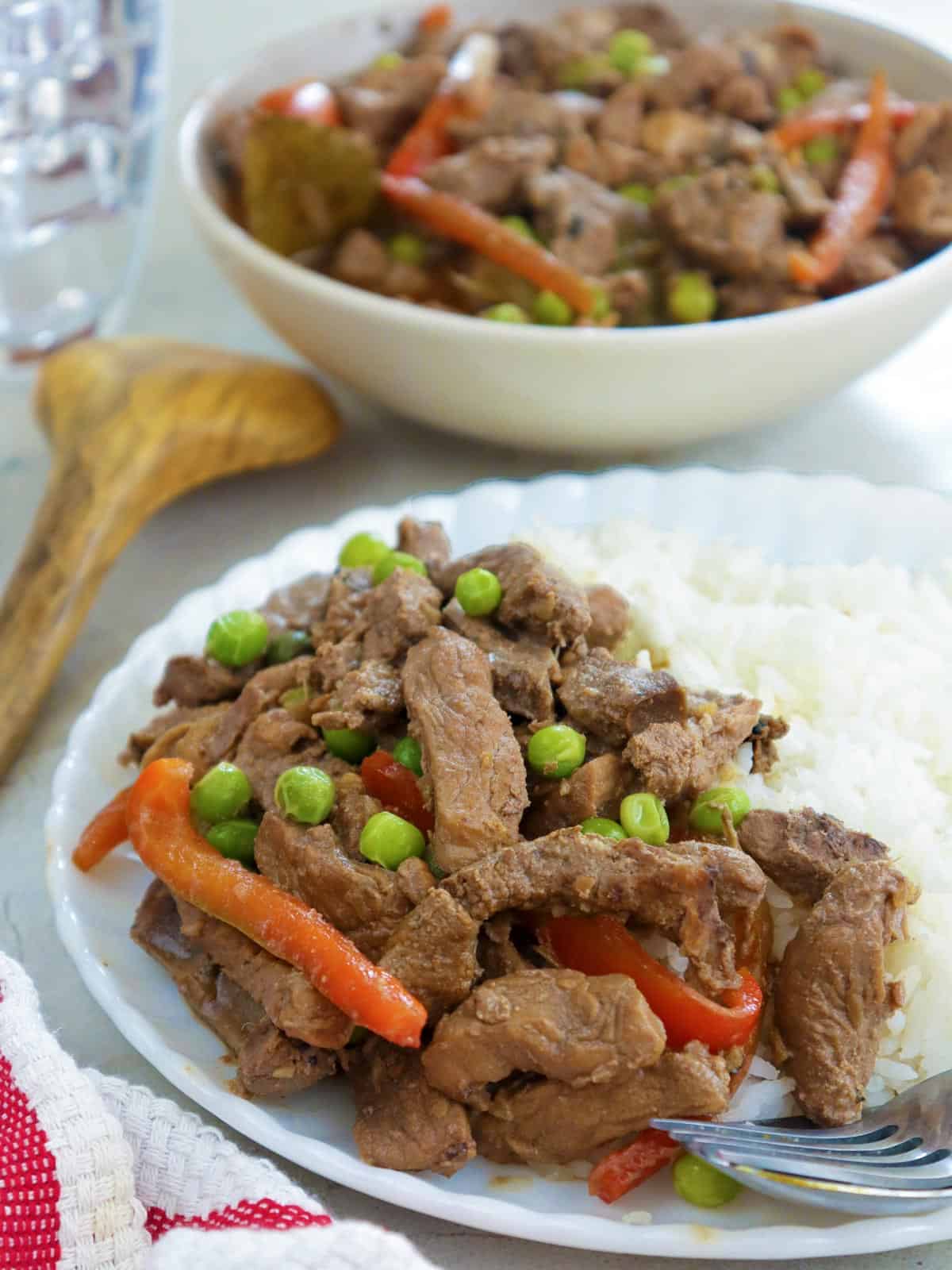Igado made with pork tenderloin, green peas, and bell peppers is an easy, budget-friendly dish that's nutritious and delicious. It's full of hearty flavors you'll love with steamed rice. Perfect for busy weeknight dinners!

Liver is one of my favorites, but I don't think many share my love for this offal. It's an acquired taste and not something you'd find people fighting over, which is a shame, really, because it's nutritious, tasty, and cooks fast and easy.
Organ meats are higher in nutrients than muscle parts of the animal and the superfood liver is an excellent source of vitamins such as A, D, E, folic acid, and minerals such as copper and iron. You get a powerhouse of nutritional benefits at the fraction of the cost of most cuts of meat.
One of the best ways to enjoy liver, in my opinion, is igado. This pork stew is not tasty and full of nutrients, but it's also easy to make and budget-friendly.

What is igado
Pork Igado is an Ilocano stew made of strips of liver and pork tenderloin braised in a tangy and savory soy sauce-vinegar mixture and spices such as garlic, onions, and bay leaves.
Other innards such as kidney and heart are also common additions, as well as green peas and bell peppers. Although this pork and liver dish is usually associated with pork menudo due to a few common ingredients, it's closer in taste to adobo and very similar to the Kapampangan kilayin.

Cooking tips
- I prefer the lean tenderloin in this recipe, but feel free to swap with pork belly or Boston butt if you prefer fattier meat.
- Cut the pork and liver in uniform strips to ensure even cooking.
- Allow the vinegar marinade to boil uncovered and undisturbed for a few minutes before adding the water to cook off the strong acid taste.
- Do not overcook the liver and add during the last 4 to 5 minutes of cook time to keep from turning tough and chewy. The "blood" in the liver will help naturally thicken the sauce.
- Pepper is an important flavor component of this pork and liver stew so make sure to generously season with freshly-cracked pepper. You can also add chopped finger chilies (siling haba) if you like a bit of heat.

How to serve and store
- Enjoy Igado as a main dish for lunch or dinner with steamed rice.
- Due to the use of vinegar, this stew keeps well and is a great make-ahead dish. Store in a container with a tight-fitting lid and refrigerate for up to 3 days.
- Reheat in the microwave or in a saucepan over medium heat until completely warmed through.
Ingredients
- 1 pound pork tenderloin, cut into ½ inch strips
- ½ cup vinegar
- ¼ cup soy sauce
- 1 onion, peeled and sliced thinly
- 2 bay leaves
- ½ teaspoon peppercorns, cracked
- 4 garlic, peeled and minced
- 1 tablespoon canola oil
- 1 small red bell pepper, cored, seeded, and sliced into strips
- 1 cup water
- 1 pound beef liver, cut into ½ inch strips
- ½ cup frozen green peas, thawed
- salt to taste
Instructions
- In a bowl, combine pork strips, vinegar, soy sauce, onions, garlic, bay leaves, and peppercorns. Marinate for about 15 to 20 minutes.
- Drain meat from marinade, squeezing excess liquid. Reserve marinade and aromatics.
- In a pan over medium-high heat, heat oil. Add bell peppers and cook for about 30 seconds. Remove and set aside.
- In the pan, add pork and cook, stirring occasionally, until color changes.
- Add onions, garlic, peppercorns, and bay leaves (from marinating pork) and cook until softened and pork is lightly browned.
- Add reserved marinade and bring to a boil, uncovered and without stirring, for about 4 to 5 minutes.
- Add water and bring to a boil.
- Lower heat, cover, and simmer for about 25 to 30 minutes or until pork is tender and liquid is reduced.
- Add liver, stirring gently to combine, and continue to cook for about 4 to 5 minutes or until liver is cooked through and sauce is thickened.
- Add green peas and cook for about 2 to 3 minutes or until heated through.
- Add bell peppers and continue to cook for another 1 to 2 minutes or until tender yet crisp.
- Season with salt to taste. Serve hot.
Notes
Video

Nutrition Information
“This website provides approximate nutrition information for convenience and as a courtesy only. Nutrition data is gathered primarily from the USDA Food Composition Database, whenever available, or otherwise other online calculators.”




Jamie says
I think this was delicious. I did add a little carrots and celery.
JAYBIE says
AS I GREW UP IN THE NORTHERN PART OF LUZON, FULL BLOODED ILOCO, WE USUALLY COOKED IGADO IN A VERY SIMPLE WAY, BUT WE ALSO ADD POTATOES IN IT WITH STRIP CUTS AND WE ADD CORN STARCH MELTED IN WATER TO MAKE IT STICKY AND TO REDUCE THE PRESENCE OF SAUCE, JUST PATATAS, BELL PEPPER AND THE BUTO OF GISANTES, WE ALSO ADD SMALL AMOUNT OF VETSIN (JUST FOR THE RECORD) TO MAKE IT MORE TASTIER.
I WISH IT WILL BE HELPFUL FOR BETTER RECIPES.
JAYBIE says
HI MS LAINE, HAPPY TO FIND YOU, INDEED CAN YOU POST RECIPES MORE ON CHICKEN DISHES BUT EASY AND QUICK TO COOK? SAUDI OFW HERE, JUST CHICKEN AND BEEF ARE MEATS AVAILABLE IN HERE SINCE IM NOT EATING CAMEL AND SHEEP AS WELL.
THANKK!
Eve Sison says
Hi Lalaine, I would like to try this. Would beef liver make a big difference over pork liver?
Lalaine Manalo says
No, you can use beef or pork liver 🙂
Evelyn Faraone says
Thank you Lalaine, I liked all the recipes I tried from your website
Lalaine Manalo says
Thank you so much! I'm glad you find the recipes helpful.
Cid De Leon says
Nice! I'll try to cook igado tomorrow.
Lalaine Manalo says
Happy cooking!
Josie daplas says
Thank you for the simplest recipe❤️❤️ I have my small lutong ulam carenderia and I follow your recipe..
Mangibin says
I am a Filipino living in France and I must say, most Filipino dishes I tasted were from here and not at home!
So we've been doing potlucks on every occasion. I've tasted igado from La Union and Pangsinan.
Whenever I eat a new dish, and I'd love to know how it was made, and kawaling Pinoy is my go-to!
Thank you so much!